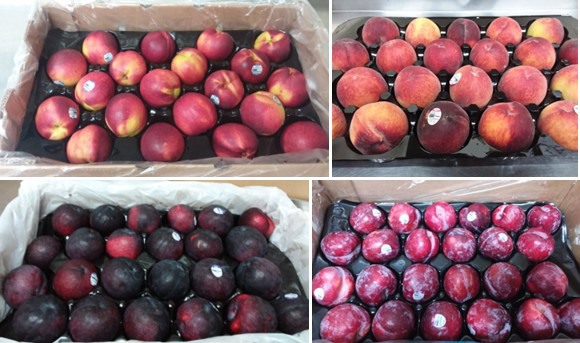The Chilean stone fruit season has pretty much come to an end. “It has been a long season and the end is usually a bit of a battle,” says Cristian Ramila with Bengard Marketing. The season started off very stable as there typically is not much stone fruit on the market in December and January, the early months of the season. As a result, prices for peaches and yellow nectarines were around $24-$20/box at that time.

While competition from other countries is negligible during the entire Chilean stone fruit season, volumes just accumulate much quicker during the later part. “Towards the end of February and into March, vessels arrive in the US about every three to four days and there is just not enough time to move the more than 120,000 boxes that arrive each week,” said Ramila.
“Things usually get tricky in March as storability decreases and the flesh tends to turn brown a bit quicker.” As a result, prices generally go down. During the final part of the season, prices of peaches and nectarines went down to $16-$14/box. Prices for plums are a bit better as plums last longer. Their lowest price point this season was $18/box and they saw highs of $24-$26/box. Overall, Ramila described demand as fairly good this season.
Bulk vessels and containers
Logistics wise, the situation was much better this season compared to last year. “We used a combination of charter vessels and container shipments,” said Ramila. “The charter vessels (bulk) sail directly from Chile to both coasts of the US, which only takes 14 days.” The first vessels arrived on the West Coast the first week of January and arrivals on the East Coast started around December 20th. The last bulk vessels arrived on April 10 and April 20 respectively. For container shipments, the backlog at the Port of Long Beach has cleared and liner vessels were used throughout the Chilean stone fruit season. This is a journey of about 20-25 days.

The season for peaches and nectarines wrapped up at the end of March, which was a little earlier than usual. Right now, plums are the only stone fruit variety from Chile left in the market. “Plums will finish early May and although the start of California’s stone fruit season is delayed by about ten days, it should start soon. “Chile’s December through April stone fruit window is unique as the country is basically the only shipper to the US that time of year. While Australia and South Africa are in season, their exports to the US are insignificant. It’s a great opportunity for Chile to agree to maintain a certain volume. If growers can work it out, they should be able to keep the December through April window pretty stable.”
In addition to stone fruit, Bengard Marketing brings in cherries, grapes, pears, and Asian Pears from South America.
 For more information:
For more information:
Cristian Ramila
Bengard Marketing
Tel: +1 (310) 605-5105
cristian@bengard.us
www.bengard.us
